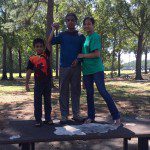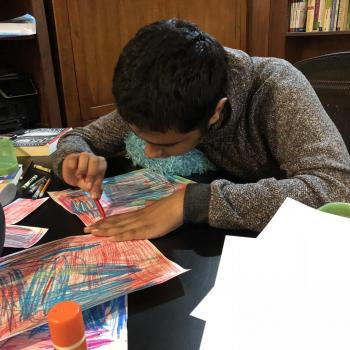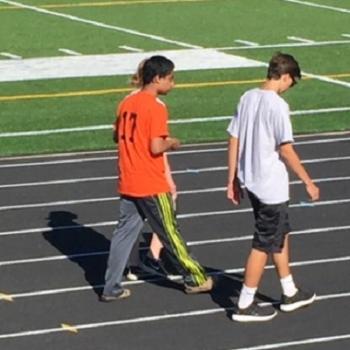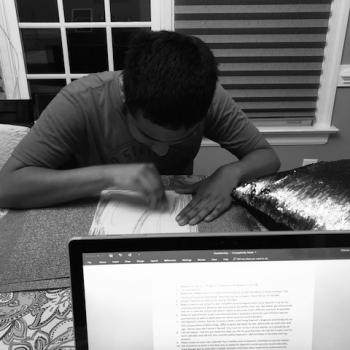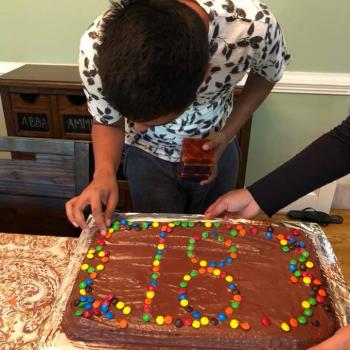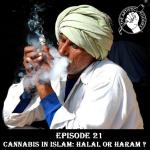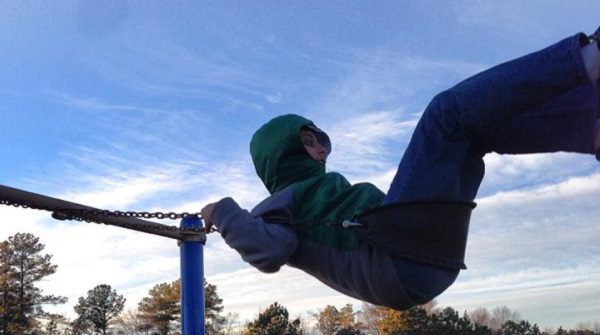
This is Day 26 of the Ali Family #AutismTruths – April 26, 2017
Dear World:
At the beginning of April, on Day One, I wrote this:
Here’s a question – how do you find that balance or place for the narratives that celebrate the neurodiversity differences of autism and feature the voices and stories of those who are actually autistic and teach the world about acceptance, accommodation and inclusion, AND also openly talk about the challenges, the medical comorbidities, the huge difficulties some autistic individuals live with and make space for research to find causation, treatments, therapies and help that will mitigate these challenges and make lives better?
It’s a mouthful, I know.
D’s had it tough from the beginning. Very tough. Like simultaneously fill-my-heart-with-immense-love-and-fierce-strength-but-break-my-heart-in-a-million pieces tough.
Like it should not be this tough and difficult for him.
So, in our conversations – how do we acknowledge and tackle all of it?
This is some of what I’m thinking about as we approach another April and Autism Awareness Month.
And now that we’re nearing the end of the month, this question of balance is ever present in my mind. I’ve seen the autism narrative shift, change, double back, branch off and move in many directions since D was first diagnosed. Nearly 14 years ago, one of the few websites offering help and direction was Autism Speaks.
We all rallied around Autism Speaks and their “Light it Up Blue” campaign. Their pervasive narrative back then about how autism was negative — a heartbreaking diagnosis foretelling of families falling apart, distressed kids with little future and other dire things — was one most of us bought into back then. (The organization has evolved, though it still receives a fair share of criticisms.) Applied Behavior Analysis (ABA) was the only type of therapy that developmental pediatricians and autism educators would prescribe for autistics.
Back then, gluten-free, casein-free diets were one of the only “biomedical” things one could think of. Other biomed interventions were shots in the dark, most not backed up by proper studies and research. But still we tried a bunch of things anyway.
When I started documenting D’s journey and our family’s living, some of what I wrote was raw and often negative towards autism. I don’t feel bad about that. Our journey has been just that – a journey. I also don’t feel bad that even now I struggle with D’s disability. I have read time and time again the argument that one cannot separate the person from his autism because it is part and parcel of who an autistic person is. And by that thinking, to hate autism is to hate fundamental part of that person – to hate that person.
Yes. And No. I don’t have to think autism is a gift, or be happy that D is autistic. I’m happy with D just as he is, yes. I love him with a love I didn’t know was possible. But I’m not at all happy about how difficult and challenging and painful his life has been so often. He’s not a “quirky” dude. He’s not someone who is keeping up academically but struggling socially. Without violating his privacy, I can say his challenges are profound.
This is not to lessen the challenges that everyone on the autism spectrum face – I know many individuals with autism who are keeping up with their peers but struggling with friendships and relationships and the awareness that they can’t seem to fit in. Connecting with, listening to and reading the narratives of those who are actually autistic has been an eye-opening experience. Autistic voices should be centered and leading all of this – they are the ones living this life.
But there are also those like my son. Nonverbal, but not non-communicative. And I will do my best to be his ghost writer – making sure he is heard without claiming to speak for him.
It’s all so very tough in many ways. It’s also so very beautiful, special, insightful, eye-opening and simply brilliant in many ways.
Having had our toes in nearly every sort of (private and public) autism group and engaged in, researched or at least read about nearly every different type of therapy – behavioral, educational social, speech, occupational, physical, biomedical and medical – I feel like we have had straddled it all in our pursuit of helping D live the best, most healthy and most peaceful life possible.
All this is to say that there is room for all. I believe there can be room for all in autism land – the neurodiversity, the centering of autistic voices, the positive stories, the hard stories, the debate around the word “cure,” the parents and caregivers, the advocates, the research on medical comorbidities and underlying medical and biomedical causes, the rejection of non-researched harmful interventions, the pride, the sorrow, the joy, the pain – the living.
All of it.
Sincerely,
Dilshad

